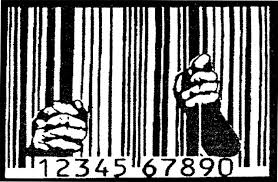Hoy en día, vivimos en una sociedad que consume cada vez mas cosas. El vídeo "Isla de Flores" muestra como es el proceso por el cual la gente llega a comprar cosas en los supermercados y que gana cada uno que forma parte del proceso o de llevar los productos o de los que los compra. Un ejemplo es una señora que gracias a su trabajo se puede dar el lujo de comprar alimentos para que su familia pueda comer. Así, es como puede satisfacer sus necesidades básicas, en este caso la comida. Sin embargo, ella tira a la basura una verdura que no considera no apto para comerse. Acá el consumismo muestra que al comprar cosas de mas, estas terminan en la basura porque compramos por comprar.

Cuando el video continua, se muestra que el tomate termina en esta Isla de Flores, un basurero, donde las cosas orgánicas se las dan como alimento a los chanchos. Los alimentos que no son ni aceptables para estos animales son los que un grupo de gente, con bajos recursos que no logran satisfacer sus necesidades básicas, busca alimentos para comer. El video logra demostrar que todos los humanos tenemos cerebro desarrollado, pulgares oponibles y libertad, pero todos tenemos diferente capacidad para obtener necesidades básicas y comida saludable (que no tenga probablemente enfermedades y sea encontrada en un basurero). Esta claro que el sistema político y social marca una gran diferencia económica que causa estas cosas.

Ademas, el video de
"Juanito Laguna" muestra una idea parecida al video anterior. Acá sale el tema de Obsolescencia Programada, el acto de desechar o utilizar poco los productos y así aumentar el consumismo. Este video muestra como el famoso artista Antonio Berni, crea un personaje con basura que encuentra en la calle. Él crea un objeto de consumo que va en contra de la ilusión de la belleza, reflejando un mundo de miseria. Los dos videos muestran como el consumismo crea residuos constantemente, que la gente que no tiene ingresos tiene que o vivir cerca de esos lugares o alimentarse de esos intolerables y asquerosos lugares. En vez de consumir tantas cosas, podríamos invertir esa plata en ayudar a estas personas.

